
Roulette is a casino game which was likely developed from the Italian game Biribi. In the game, a player may choose to place a bet on a single number, various groupings of numbers, the color red or black, whether the number is odd or even, or if the numbers are high (19–36) or low (1–18).

A wearable computer, also known as a body-borne computer, is a computing device worn on the body. The definition of 'wearable computer' may be narrow or broad, extending to smartphones or even ordinary wristwatches.
Scott O'Dell was an American writer of 26 novels for young people, along with three novels for adults and four nonfiction books. He wrote historical fiction, primarily, including several children's novels about historical California and Mexico. For his contribution as a children's writer he received the biennial, international Hans Christian Andersen Award in 1972, the highest recognition available to creators of children's books. He received The University of Southern Mississippi Medallion in 1976 and the Catholic Libraries Association Regina Medal in 1978.

Galway Mills Kinnell was an American poet. He won the Pulitzer Prize for Poetry for his 1982 collection, Selected Poems and split the National Book Award for Poetry with Charles Wright. From 1989 to 1993, he was poet laureate for the state of Vermont.
Edward Oakley Thorp is an American mathematics professor, author, hedge fund manager, and blackjack researcher. He pioneered the modern applications of probability theory, including the harnessing of very small correlations for reliable financial gain.
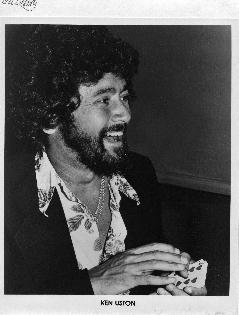
Ken Uston was an American blackjack player, strategist and author, credited with popularizing the concept of team play at blackjack. During the early to mid-1970s he gained widespread notoriety for perfecting techniques to do team card counting in numerous casinos worldwide, earning millions of dollars from the casinos, with some bets as high as $12,000 on a single hand.

J. Doyne Farmer is an American complex systems scientist and entrepreneur with interests in chaos theory, complexity and econophysics. He is Baillie Gifford Professor of Complex Systems Science at the Smith School of Enterprise and the Environment, Oxford University, where he is also director of the Complexity Economics programme at the Institute for New Economic Thinking at the Oxford Martin School. Additionally he is an external professor at the Santa Fe Institute. His current research is on complexity economics, focusing on systemic risk in financial markets and technological progress. During his career he has made important contributions to complex systems, chaos, artificial life, theoretical biology, time series forecasting and econophysics. He co-founded Prediction Company, one of the first companies to do fully automated quantitative trading. While a graduate student he led a group that called itself Eudaemonic Enterprises and built the first wearable digital computer, which was used to beat the game of roulette.
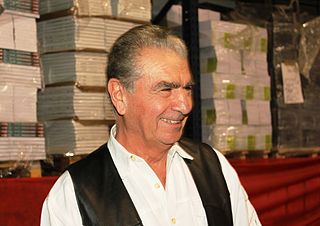
Michael Bar-Zohar is an Israeli historian, novelist and politician. He was a member of the Knesset on behalf of the Alignment and Labor Party in the 1980s and early 1990s.
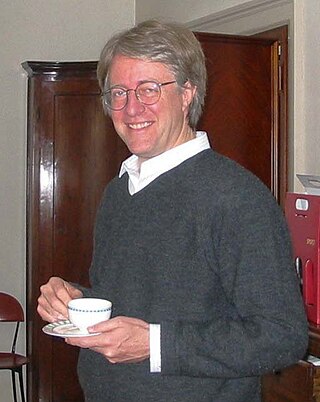
Norman Harry Packard is a chaos theory physicist and one of the founders of the Prediction Company and ProtoLife. He is an alumnus of Reed College and the University of California, Santa Cruz. Packard is known for his contributions to chaos theory, complex systems, and artificial life. He coined the phrase "the edge of chaos".
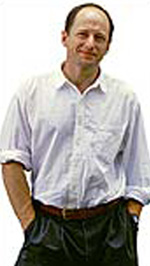
Rick Bass is an American writer and an environmental activist. He has a Bachelor of Science in Geology with a focus in Wildlife from Utah State University. Right after he graduated, he interned for one year as a Wildlife Biologist at the Weyerhaeuser Timber Company in Arkansas. He then went onto working as an oil and gas geologist and consultant before becoming a writer and teacher. He has worked across the United States at various universities: University of Texas at Austin, Beloit College, University of Montana, Pacific University, and most recently Iowa State University. He has done many workshops and lectures on writing and wildlife throughout his career. Texas Tech University and University of Texas at Austin have collections of his written work.
Thomas Alden Bass is an American writer and professor in literature, journalism, and history.
Robert Stetson Shaw is an American physicist who was part of Eudaemonic Enterprises in Santa Cruz in the late 1970s and early 1980s. In 1988 he was awarded a MacArthur Fellowship for his work in chaos theory.
Jerry L. Patterson is an American writer. He authored several gambling books as well as a gambling newspaper column.

Rosemary Mahoney is an American writer. She has published six books of narrative non-fiction and numerous magazine articles. For the American Spectator, Christopher Caldwell wrote, "Mahoney has an effortlessly pretty prose style and an uncanny eye. .. . a literary talent that amounts to brilliance."
Alan Richard Shapiro is an American poet and professor of English and creative writing at the University of North Carolina, Chapel Hill.

Michael Robert Collier is an American poet, teacher, creative writing program administrator and editor. He has published five books of original poetry, a translation of Euripides' Medea, a book of prose pieces about poetry, and has edited three anthologies of poetry. From 2001 to 2004 he was the Poet Laureate of Maryland. As of 2011, he is the director of the Bread Loaf Writers' Conference, a professor of creative writing at the University of Maryland, College Park and the poetry editorial consultant for Houghton Mifflin.
Michael Charles Alston Mott was a British-born American author. He produced eleven poetry collections, four novels and a renowned biography of Thomas Merton.
The Eudaemons were a small group headed by graduate physics students J. Doyne Farmer and Norman Packard at the University of California Santa Cruz in the late 1970s. The group's immediate objective was to find a way to beat roulette using a concealed computer, but a loftier objective was to use the money made from roulette to fund a scientific community. The name of the group was inspired by the eudaimonism philosophy.
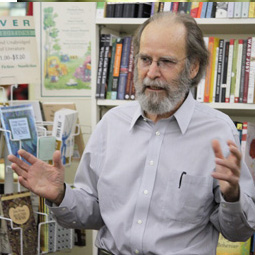
Dale Peterson is an American author who writes about scientific and natural history subjects.
Four Horsemen of the Apocalypse is the name given by gambling authors to the four U.S. Army engineers who first discovered in the 1950s the best playing strategy in the casino game of Blackjack that can be formulated on the basis of the player's and the dealer's cards. The so-called Basic Strategy, which was subsequently refined through the use of computers and combinatorial analysis, loses the least money to the casino in the long term.











